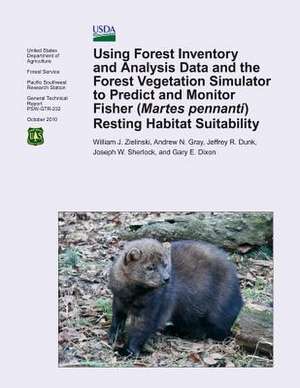Using Forest Inventory and Analysis Data and the Forest Vegetation Simulator to Predict and Monitor Fisher (Martes Pennanti) Resting Habitat Suitabili
Autor William J. Zielinski, Andrew N. Gray, Jeffrey R. Dunken Limba Engleză Paperback
Preț: 94.25 lei
Nou
Puncte Express: 141
Preț estimativ în valută:
18.04€ • 19.29$ • 15.04£
18.04€ • 19.29$ • 15.04£
Carte disponibilă
Livrare economică 28 martie-11 aprilie
Preluare comenzi: 021 569.72.76
Specificații
ISBN-13: 9781480163607
ISBN-10: 1480163600
Pagini: 40
Dimensiuni: 216 x 279 x 2 mm
Greutate: 0.12 kg
Editura: CREATESPACE
ISBN-10: 1480163600
Pagini: 40
Dimensiuni: 216 x 279 x 2 mm
Greutate: 0.12 kg
Editura: CREATESPACE
